Hello, this is Conservario.
Suddenly, but what do you think is the difference between skilled people and those who aren't?
There are probably many opinions, but I believe it's the ability to pay attention even to the smallest details.
Being able to perform challenging pieces or use impressive techniques is certainly a sign of skill.
But why does it sound different, even when played the same way?
It's because a person's individuality comes through in the finer details.
Vibrato is one of the most expressive areas where that individuality tends to show.
In this column, I'll introduce how to do vibrato and how to practice it.
■ Vibrato
Vibrato is the technique of subtly changing the pitch by shaking the string or your finger.
It's the same vibrato that often comes up when talking about whether someone is a good singer or not.
Being able to do vibrato on the ukulele will greatly expand your expressive range, so be sure to master it.
There are two ways to apply vibrato:
① Horizontal vibrato
② Vertical vibrato
Let’s go through each one in detail.
① Horizontal Vibrato
Press down on the 2nd fret of the 3rd string with your index finger.
You can use any string or fret, but practicing on the 3rd string, which is the thickest, makes it easier to notice pitch changes and get the feel for it.
Once you’ve pressed the 2nd fret of the 3rd string as usual, shake your finger left and right.
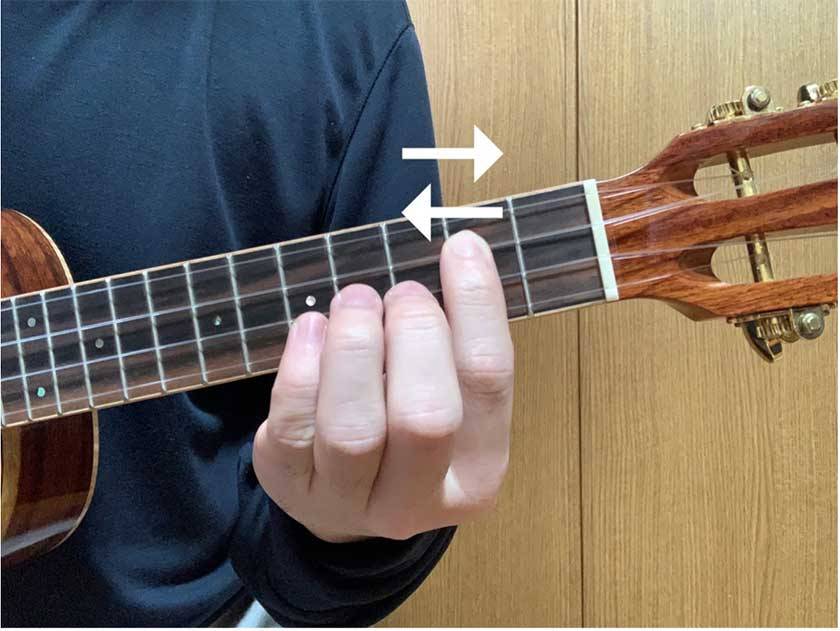
Did you notice the slight wobble in the sound?
You might be thinking, “Did it really wobble just a little…?”
That’s perfectly fine—exactly what you want.
This horizontal vibrato technique is commonly used in classical guitar.
It’s also the same method used in instruments like the violin and cello.
This method is used when you want to apply vibrato subtly, rather than in a big or dramatic way.
Compared to the “vertical vibrato” I’ll introduce next, the sound doesn’t waver as much.
However, once you get used to this horizontal technique, you can even apply it to chords.
Try holding down a chord that uses three or four fingers.
Once you’ve pressed the chord, try shaking it side to side.
It might feel harder than when using just one finger, but you should notice the whole chord slightly wavering.
Be careful—some people end up shaking the whole ukulele (and even their body, too!), so watch out! (lol)
The only things that should be moving are the string and the sound.
If you move your finger slowly, the sound will also wobble slowly.
If you move it quickly, the sound will wobble quickly too.
There’s no single “correct” way—
It depends on your preference and the song. Think about what kind of vibrato works best in each situation as you play.
Next, let’s look at the vertical vibrato technique.
② Vertical Vibrato
Just like before, press down on the 2nd fret of the 3rd string with your index finger. While keeping it pressed, shake the string up and down.
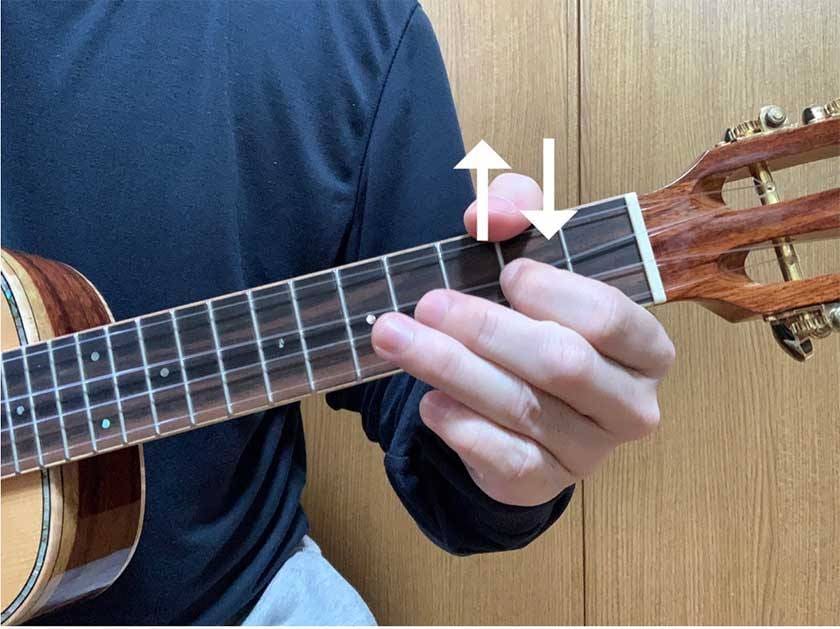
Compared to the horizontal vibrato, the sound wobbles much more noticeably here.
Rather than just a slight shimmer, you can really hear the pitch changing.
This technique is commonly used on electric guitars—
It’s an essential skill in rock and blues music.
When applying vibrato to the 3rd string, it’s a good idea to:
push the string downward → return to the original position → push downward again → return—repeat this motion.
Of course, you should decide based on your own preference and what feels easiest to play.
For me personally, I apply vibrato downward on the 4th and 3rd strings, and upward on the 2nd and 1st strings.
For the 3rd and 2nd strings, it doesn’t really matter whether you apply vibrato upward or downward—either direction works.
However, due to the nature of the ukulele, the 4th and 1st strings are pretty much fixed in direction:
you should apply vibrato downward on the 4th string, and upward on the 1st string.
Try applying vibrato upward on the 4th string—you’ll notice the string pops off the fretboard and makes an odd sound.
The same thing happens with the 1st string if you try to push it downward.
So, for the 3rd and 2nd strings, experiment with both directions and decide what feels best for you.
“Temporarily decide” on a direction for now, because in an actual song, the most comfortable direction to apply vibrato may change depending on the phrase or the chord before and after.
There are quite a few important points to keep in mind with vertical vibrato.
Just like with the horizontal method, make sure you’re not shaking the entire ukulele.
And there’s a technique to how you apply it, too.
When using your index finger, don’t try to move the string up and down using just finger strength.
Instead, use your wrist—like the motion you make when turning a doorknob.
Your finger just holds down the string; the wrist does the up-and-down movement.
Try out both slow and fast vibrato to see how it feels.
And be sure to practice not only with your index finger, but also with your middle, ring, and pinky fingers.
Summary
We’ve gone over two main ways to apply vibrato. Vibrato is truly a deep and expressive technique.
Though it wasn’t covered in this column, some players even apply vibrato in a “curved” motion!
It’s like drawing a circle with your finger, combining both up-down and side-to-side movements.
If you can master this, you’ll be able to use both horizontal and vertical motions at the same time.
However, it’s a very advanced technique—even for professionals—so if you’re curious and want to try it, be careful not to develop any bad habits along the way.
The guitarist Steve Vai is known for using this technique often, so if you’re interested, be sure to check him out.
Whether you apply vibrato quickly or slowly, or whether the pitch change is big or subtle—
there are endless combinations to explore with vibrato.
For now, don’t worry too much about the details—just try it out freely and discover the style of vibrato that feels right for you.
Thank you for reading all the way to the end!
→ SOUND HOUSE Ukulele Collection
The “sound & person” column is made up of contributions from you.
For details about contributing, click here.











![[Enjoy the Ukulele Even More!] Here We Go, Shredding!](/contents/uploads/thumbs/5/2022/1/20220120_5_16254_1.jpg)
![[Enjoy the Ukulele Even More!] What is a Chord in the First Place?](/contents/uploads/thumbs/5/2022/1/20220110_5_16098_1.jpg)
![[Enjoy Your Ukulele Even More!] Play Stylishly with Arpeggios](/contents/uploads/thumbs/5/2022/1/20220110_5_16096_1.jpg)
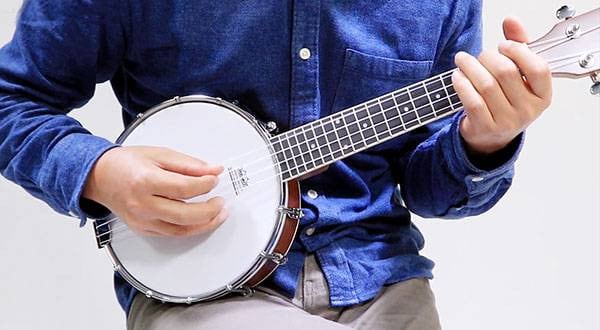

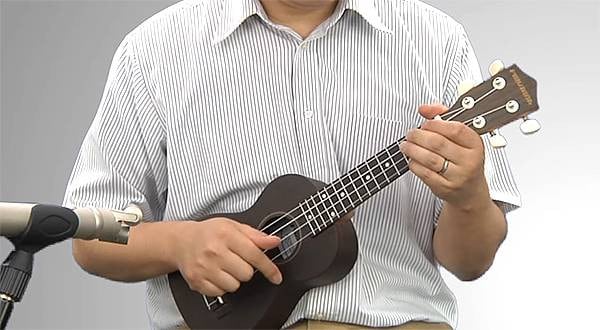
 サウンドハウス社員が選ぶ 『おもしろ商品』はコレだ!
サウンドハウス社員が選ぶ 『おもしろ商品』はコレだ!
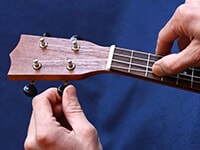 ウクレレのチューニング方法
ウクレレのチューニング方法
 ウクレレの各部名称
ウクレレの各部名称
 ウクレレの種類
ウクレレの種類
 ウクレレスタートガイド
ウクレレスタートガイド
 ウクレレ初心者講座
ウクレレ初心者講座















